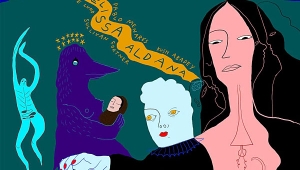| Columns Retired Columns & Blogs |
While we can appreciate that audiophiles prefer lossless ideally, I don't think it's fair to say everything lossy is a problem. Certainly not multichannel, and certainly not EAC3-JOC 768kbps (with Atmos) which is a very respectable bitrate.
If we are to be honest with ourselves and perform a controlled, blinded listening test using say 256kbps MP3 encoded with a modern encoder like LAME 3.100, I believe that you will find the vast majority of audiophiles will not be able to tell the difference. Some audiophiles might want to believe otherwise because they've experienced 128kbps MP3 back in the day, but in 2023, much has evolved if we go above 192kbps encoding even with the old MP3 codec.
As for Atmos, as I highlighted a couple weeks back, the standards for multichannel mixing are better than what we see with typical compressed stereo these days:
https://archimago.blogspot.com/2023/11/musings-multichannel-mixes-are-more.html
Thankfully, Apple (and others) have standards in place for loudness. Even if one has 2-channel playback, the stereo downmix of these Atmos streams are more dynamic and I believe audiophiles can appreciate the nuances that come through. While ideally we might still prefer to own the lossless TrueHD-Atmos version, the higher quality multichannel mix actually, IMO, typically sounds better than a compressed CD version or the equivalent 24/96+ HDtracks version.
IMO, you're wrong. Atmos and multichannel streaming will not go away. It is one of the ways we'll be thinking about higher quality sound in the future whether reproduced over headphones or multichannel speaker systems. Production cost isn't much higher and in fact a single multichannel mix can be the universal version that's used to create the 2-channel output.
As for MQA. It's not just about being lossy or proprietary. It's that they lied about being lossless at the start. They also implemented highly questionable digital filtering claiming this improved time-domain performance with zero evidence. Then they claimed that MQA-CD with only 16 bits to play with somehow could represent hi-res. And many audio journalists fell for this BS. All the while lossless streaming became commonplace.
There's simply no use for that kind of codec these days, much less promoted by/for audiophiles.













































